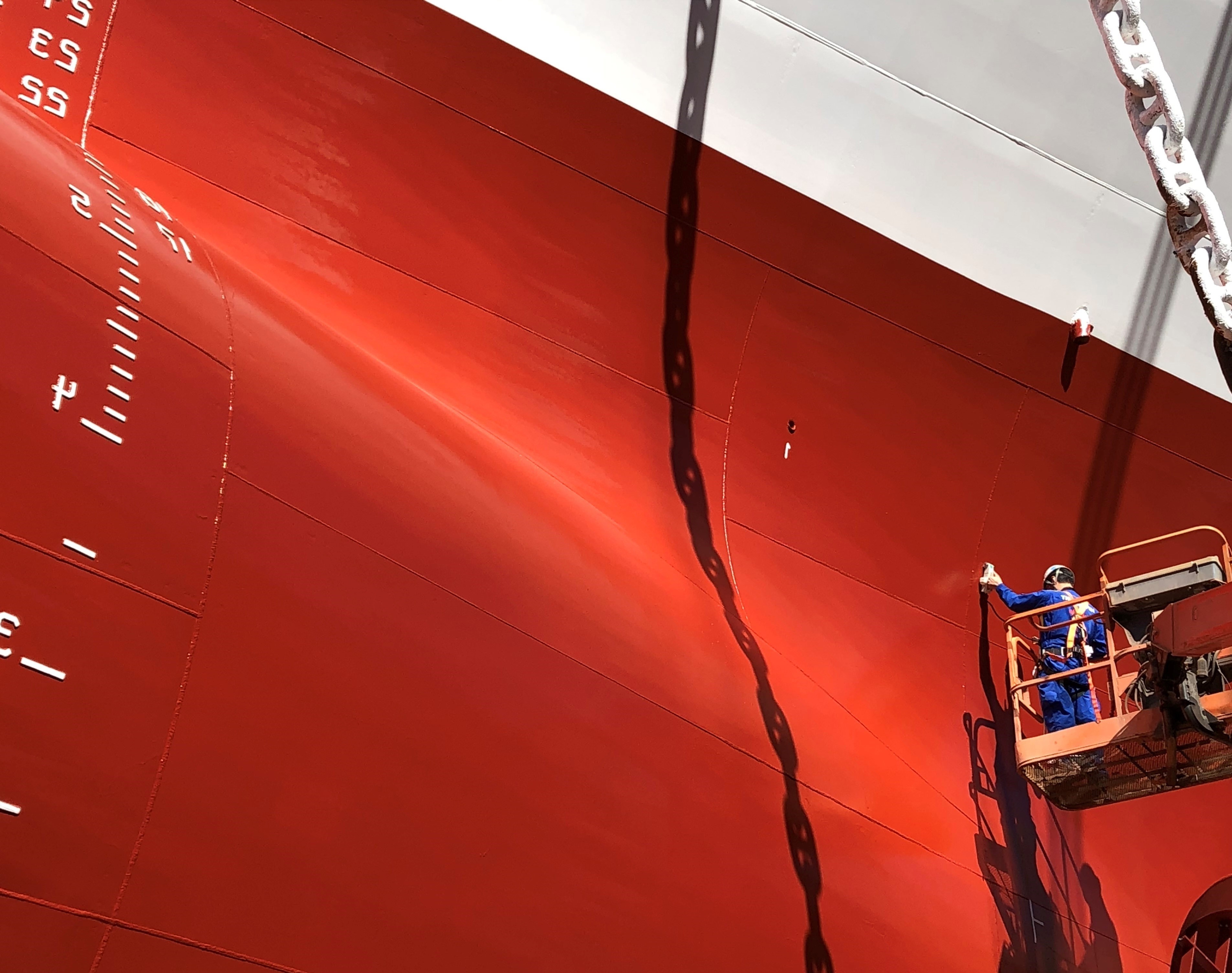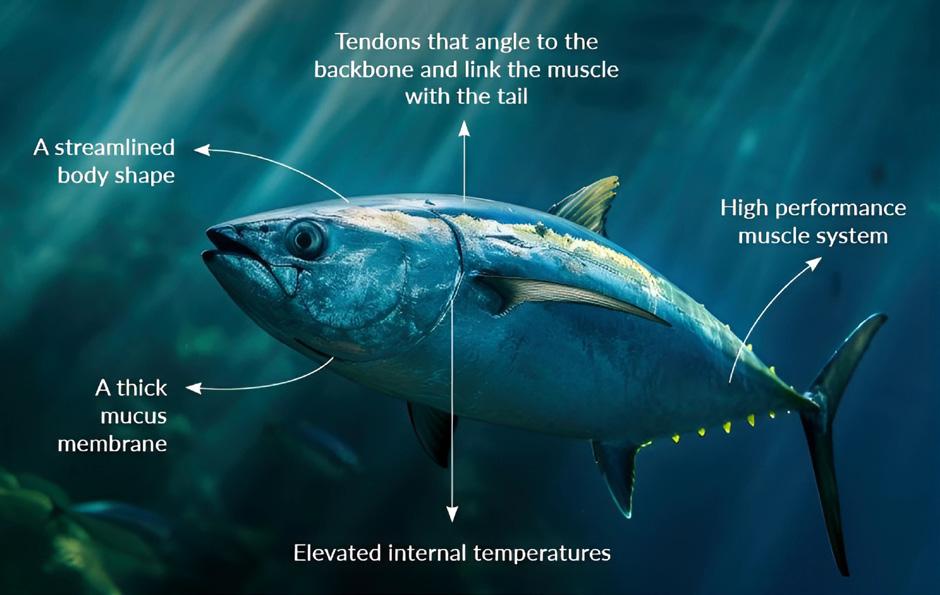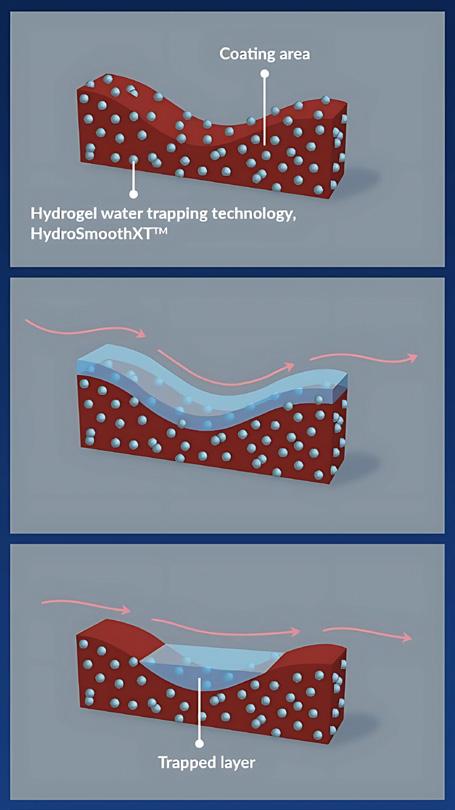
6 minute read
Smooth sailing. Exploring lessons from nature to develop sustainable products
by Kazuaki Masuda, Corporate Officer, Technical Division Director, Nippon Paint Marine
Since the earliest days of ocean transport, microorganisms, plants, algae, and animals attached to vessel hulls have been a (literal) drag on the maritime industry. Biofouling has a significant effect on operational performance, not only slowing ships down but impacting manoeuvrability and significantly reducing energy efficiency. Biofouling has been found to reduce vessel speed by up to 10%. Without dealing with it, maintaining speed can require as much as a 40% rise in fuel consumption, increasing operational costs and hindering efforts at regulatory compliance.
Historically, the response of the shipping industry to this challenge was to coat vessel hulls with compounds which were toxic to sea life but reduced the build-up of plants, algae, and other organisms. Lead, mercury, and arsenic were eluted into the ocean to prevent the build-up of organic matter on vessel bottoms. Due to the negative impact that the use of such coatings had on non-target organisms, they have, with the support of coatings manufacturers, been banned.
While preventing the destruction of marine life in our oceans is a positive outcome of the declining use of highly toxic compounds, if shipping cannot solve the challenges of decarbonisation linked to emissions from high energy consumption, the life in our seas and oceans will nonetheless remain under threat. Coatings that restrict biofouling and reduce friction between the hull and the seawater are a proven means of significantly reducing fuel consumption by preventing speed loss. Such hull coatings offer an immediately accessible and sustainable solution for managing energy efficiency and cutting carbon emissions.
The ‘secrets’
At Nippon Paint Marine, we have turned to the natural world for inspiration. For more than 140 years, we have pursued ongoing product innovation to help our customers in the maritime industry meet the evolving needs and challenges they face. Today, the R&D programme at our company helps shipowners push forward their decarbonisation efforts while protecting the marine environment and ocean ecology.
Since 2001, Nippon Paint Marine has followed the principles of biomimicry in its innovation efforts. It is a research methodology that attempts to develop innovative and sustainable technologies by copying strategies and solutions found in nature. What works ‘naturally’ has been tested by time, and by understanding the ‘secrets’ of these solutions, we can work to replicate them and develop new technologies to solve human challenges.
Hydrogels are a key example of technology developed through the study of biomimicry. Nippon Paint Marine has incorporated hydrogel technology into our hull coatings in an attempt to smooth water flow around the hull and reduce hull-towater friction. The hydrogel developed by our R&D experts – HydroSmoothXT™ –is a polymer network that holds water. By reducing frictional resistance and lowering drag, this hydrogel improves energy efficiency, reduces fuel consumption, and helps to cut emissions significantly.
Hydrogels are known to exist on the body surfaces of many marine organisms and have been credited with contributing to the high swimming speeds that certain marine animals can achieve. By studying such natural phenomena and taking a scientific approach to reproducing their natural characteristics in our products, the R&D team aimed to create technologies that could provide innovative solutions to the issues our customers faced.
Tuna-efficient
Across its biomimetics programme, Nippon Paint Marine researchers have sought out partnerships with experts to inform their research efforts to better understand these natural phenomena. The programme looked at the best ways to develop subsequent technology, commercialise it, and identify which industrial patents would be required. In developing a hydrogel to reduce friction, the research team looked at two supremely fast marine animals: tuna fish and dolphins.
The former can swim at speeds reaching 100 kilometres per hour. They have physiological adaptations to support such high speeds, including body shape, elevated internal temperatures, and a high-performance muscle system. But they also have hydrodynamic systems, special substances on the surface of their bodies, that reduce friction & drag and aid faster swimming speeds.

Nippon’s R&D team focused on the thick mucous membrane that tuna have, which secretes viscous substances with a high affinity for water, a process often argued to support lower resistance. We persisted with research to imitate this natural phenomenon and design a hydrogel that could be included in our paints. The theory was that this would create a hull coating that ‘trapped’ a layer of seawater in a surface boundary membrane, which would deliver more controlled turbulence generation on a vessel’s hull and reduce friction.
Over a five-year programme, Nippon Paint Marine scientists worked with colleagues at Osaka University to develop the hydrogel as a practical application. Investigating the relationships between surface roughness and fluid dynamics, understanding the chemical properties of hydrogel materials, and designing them into hull coating formulations. Having delivered a product that would reproduce the effects observed in nature, the team developed an industrial process for Nippon Paint Marine’s unique water trapping technology, HydroSmoothXT™, which has featured in our LF-SEA, A-LF-SEA, and FASTAR coating lines for over 15 years and applied to more than 5,000 vessels. Crucially, in trials, we have been able to identify fuel and emission savings of up to 14% for ships using these coatings compared with conventional technology.

Breaking new ground
Nippon Paint Marine’s commitment to constantly innovating our product line to meet clients’ evolving needs is a core pillar of our business. To adapt to the increasingly challenging operational environment, the maritime industry needs to embrace new and innovative solutions that support continued commercial competitiveness.
Biomimetics represents one such means by which Nippon Paint Marine has broken new ground in hull coating performance, enabling our customers to operate more sustainably and reduce their impact on the marine environment.
Nippon Paint Marine offers innovative marine coating solutions that are biocide-free, self-polishing, and nanotechnology-based. The company’s antifouling and other systems have been applied to over 40,000 vessels, from tankers and container ships to cruise liners and yachts. Nippon Paint Marine also supports customers throughout the lifetime of their asset, providing technical, training, and ongoing monitoring services to ensure its continued integrity and performance. Visit nipponpaint-marine.com to learn more.








